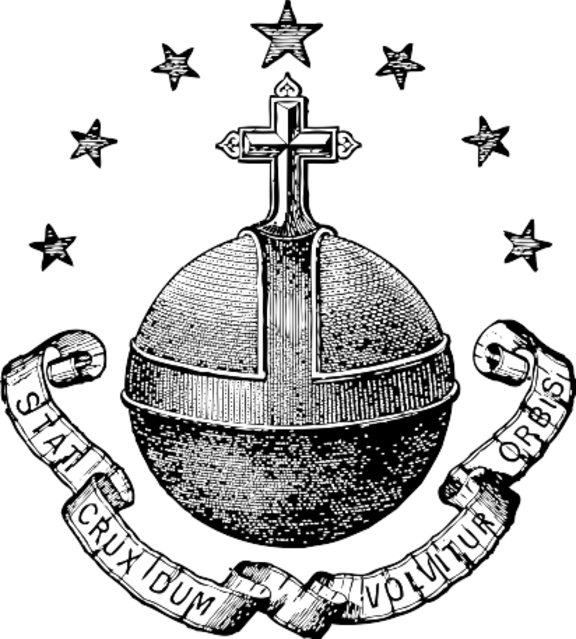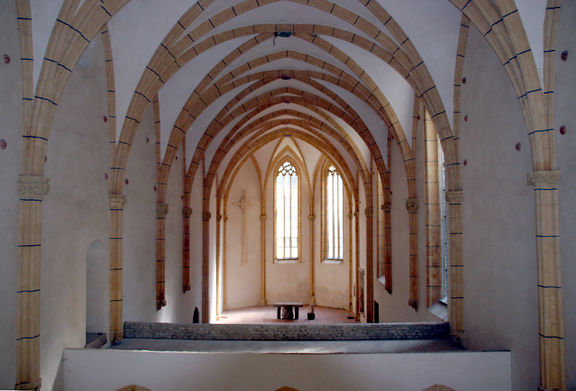It is only still inhabited Carthusian monastery in Slovenia with seven remaining white monks of strictest contemplative order in Romancatholic church. Domus sanctissime Trinitatis is the official latin name of Pleterje Charterhouse Monastery where monks are living secluded, behind walls in colloquial silence, work and prayer. Monastery has two parts Clausura where only monks, apprentices and lay monastery help are allowed and public part with gothic church of St. Trinity built in 1407 in simple style, but with so called long choir, with big gothic windows, with fish bladder and quatrefoil ornament and Parlerian elements in the interior as console masks and flower keystones. In the middle of the nave stands Rood screen that used to divide lay people from monks and in walls are built clay vessels to give space special resonance for choir voices. From gothic architectural buildings only church, part of cloister and sacristy remained other were renovations in 16th and 20th century.
Pleterje is youngest of the four Slovene Carthusian monasteries and was founded by Count Herman II of Celje in 1403 in a remote valley next to village Šentjernej under Gorjanci hills. It fas founded on a place where in 10th century castle Sicherstein was standing. Trubles for monastery and carthusian monks started early already in 1456 with death of last count of Celje Ulrik. With no defence, monastery was damaged several times during sieges of Turks in 15th century. Because of spiritual decay and and poor founding Archduke Ferdinand II. hands over the monastery to order of Jesuits which renovated and fortified monastery. They remained in charge of Pleterje monastery from 1595 to 1773. During state reforms in the end of 18th century and suppression of Jesuit order Austro - Hungarian emperor and Enlightment despot Franz Joseph II. closed monastery by decree due to operating and maintenance costs. It was left to ruin, estates were bought by barons Borsch-Borschod. In a year 1899 carthusian monks that were exiled from Grenoble by liberals repurchased Pleterje monastery and renovated it and revived the order in the region of Slovenia. The founding charter and documents of Pleterje history is preserved in the Archives of the Republic of Slovenia (ARS). Carthusian monks brought many farming innovations in Šentjernej and are traditionally known for good fruit products, wine, brandy, and bee products. Brand names are Pleterski sadjevec, Pleterska vilajmovka (strong spirits), Pater Ašič vinegar, wine Cviček and honey wine. The monastery incorporates a rich library and a collection of some 44 oil paintings from the 17th and 18th centuries, which are attributed to the Flemish, French, Italian and German Masters. A collection belonging to Dolenjska Museum is also installed in the vestibule of the church. Adjacent to the monastery is an open-air museum
Three other charterhouses in Slovenia were also Žiče, founded in 1160, Jurklošter in 1170 and Bistra in a year 1255.




